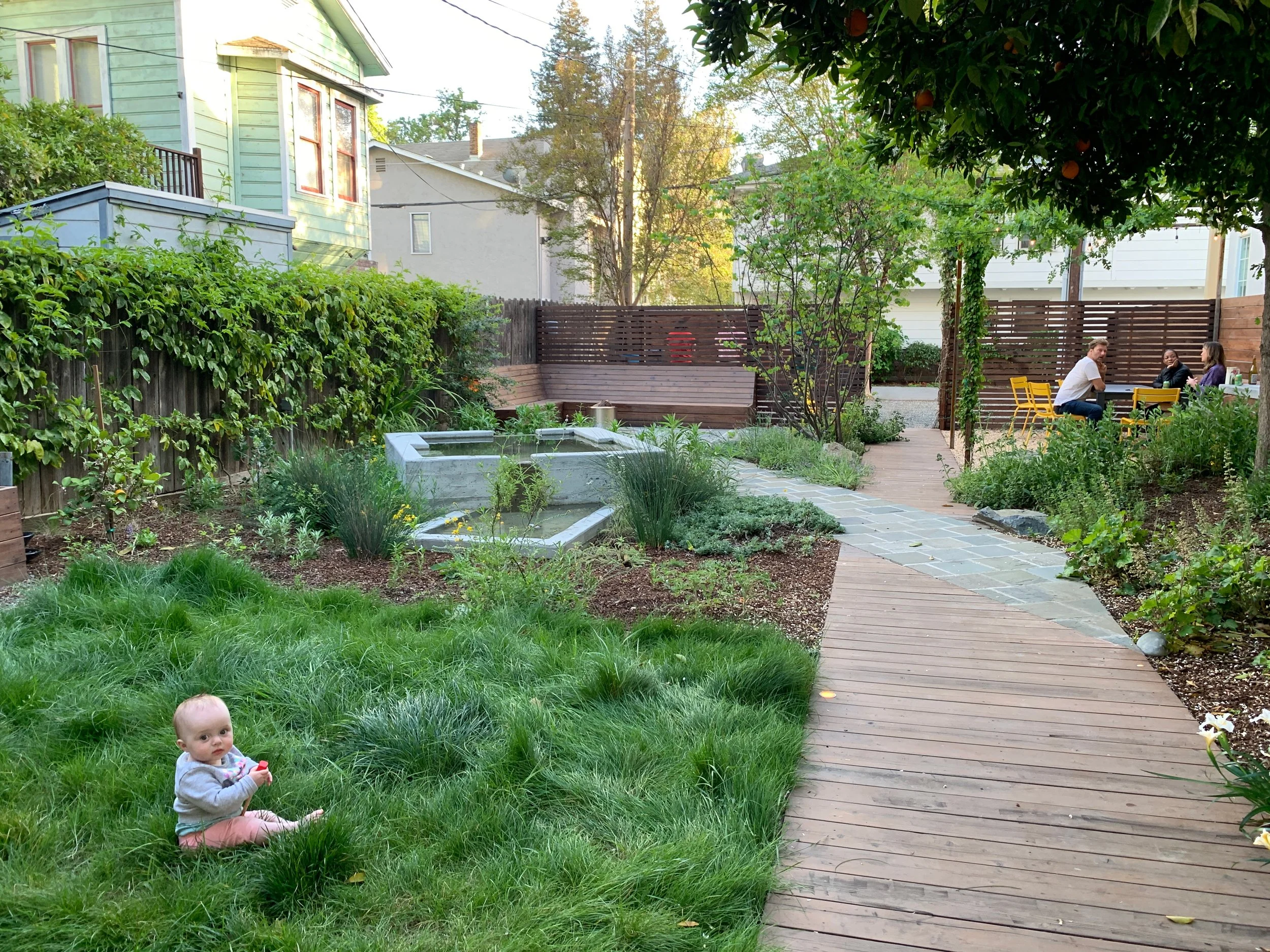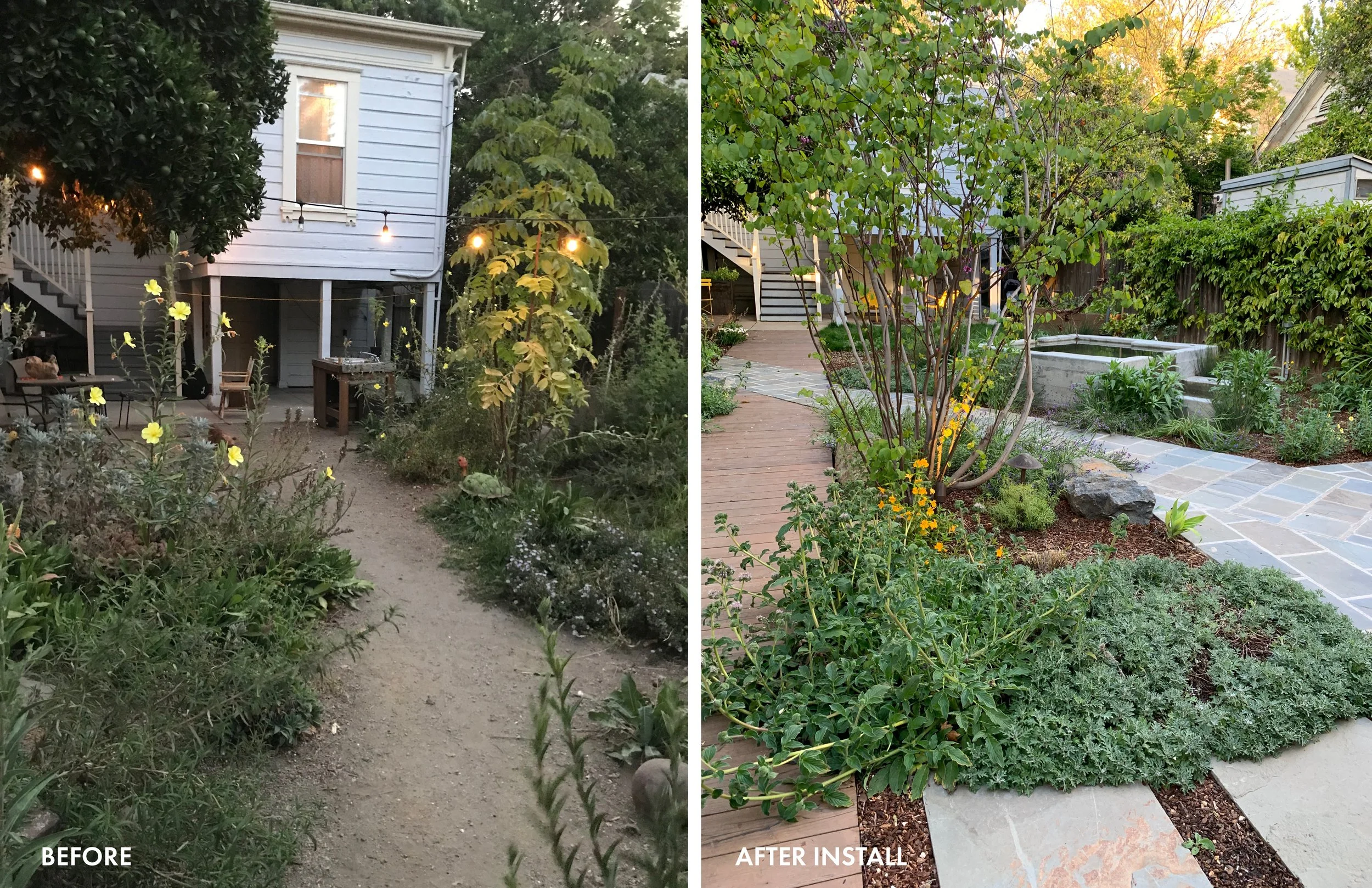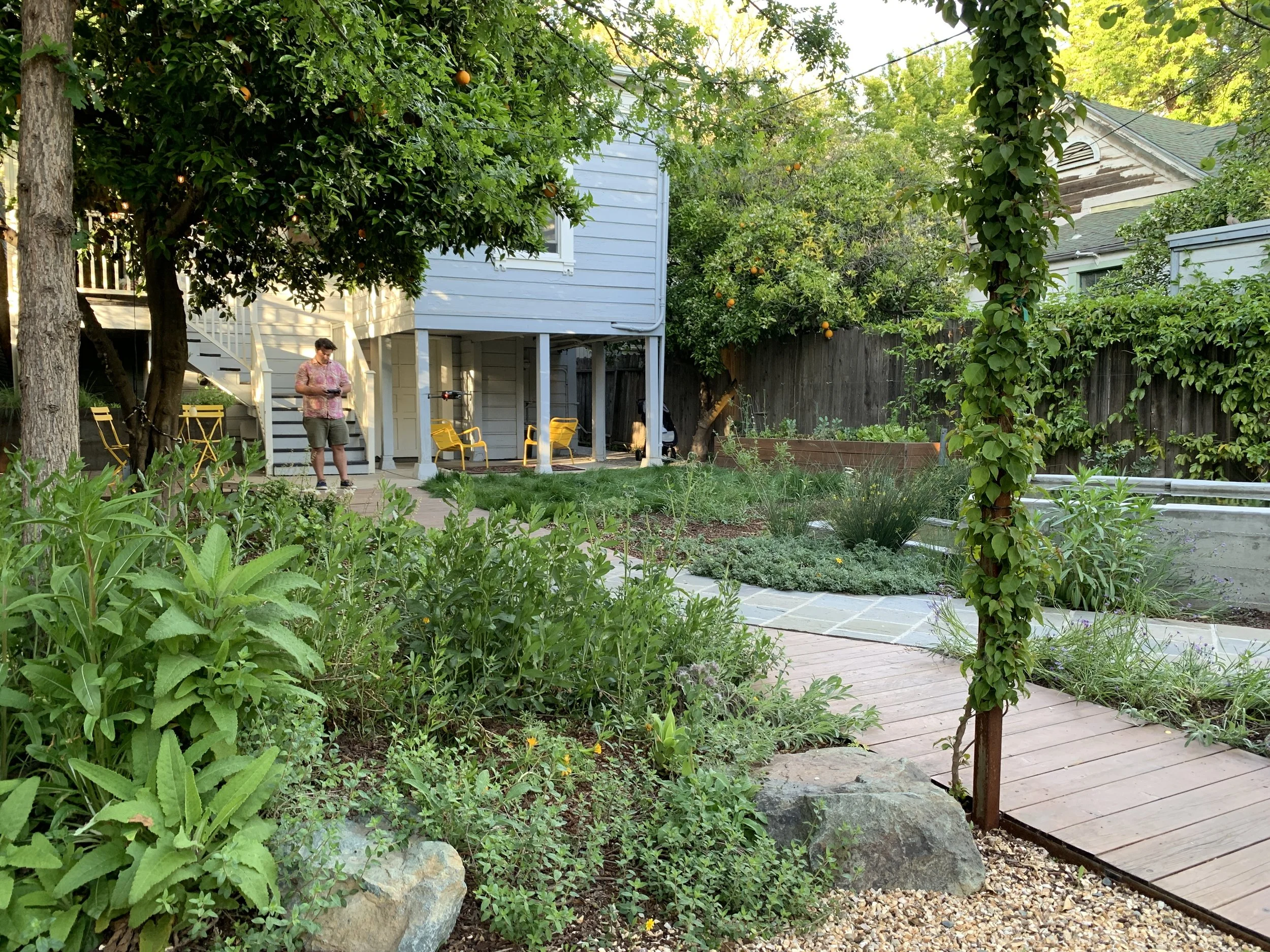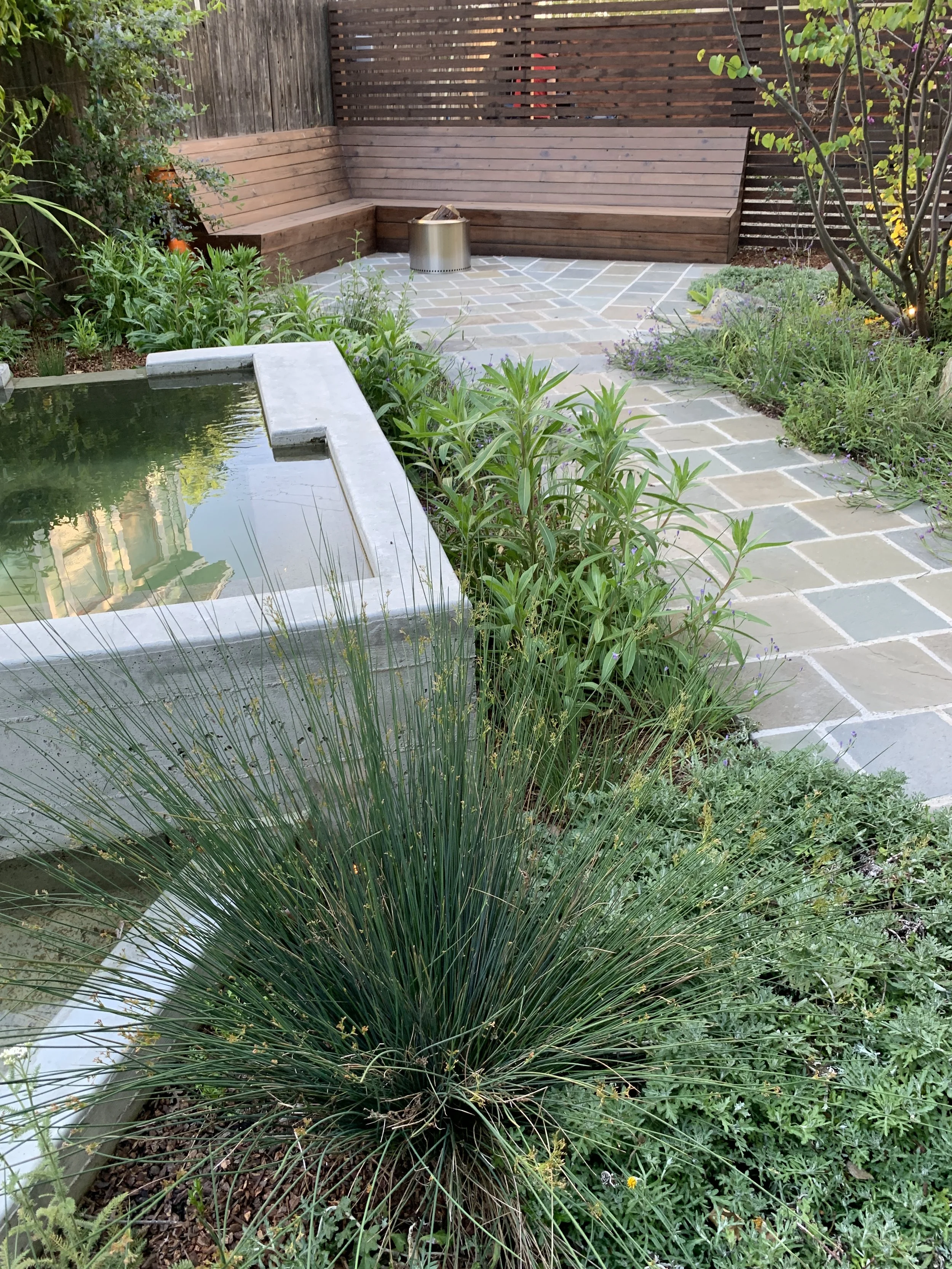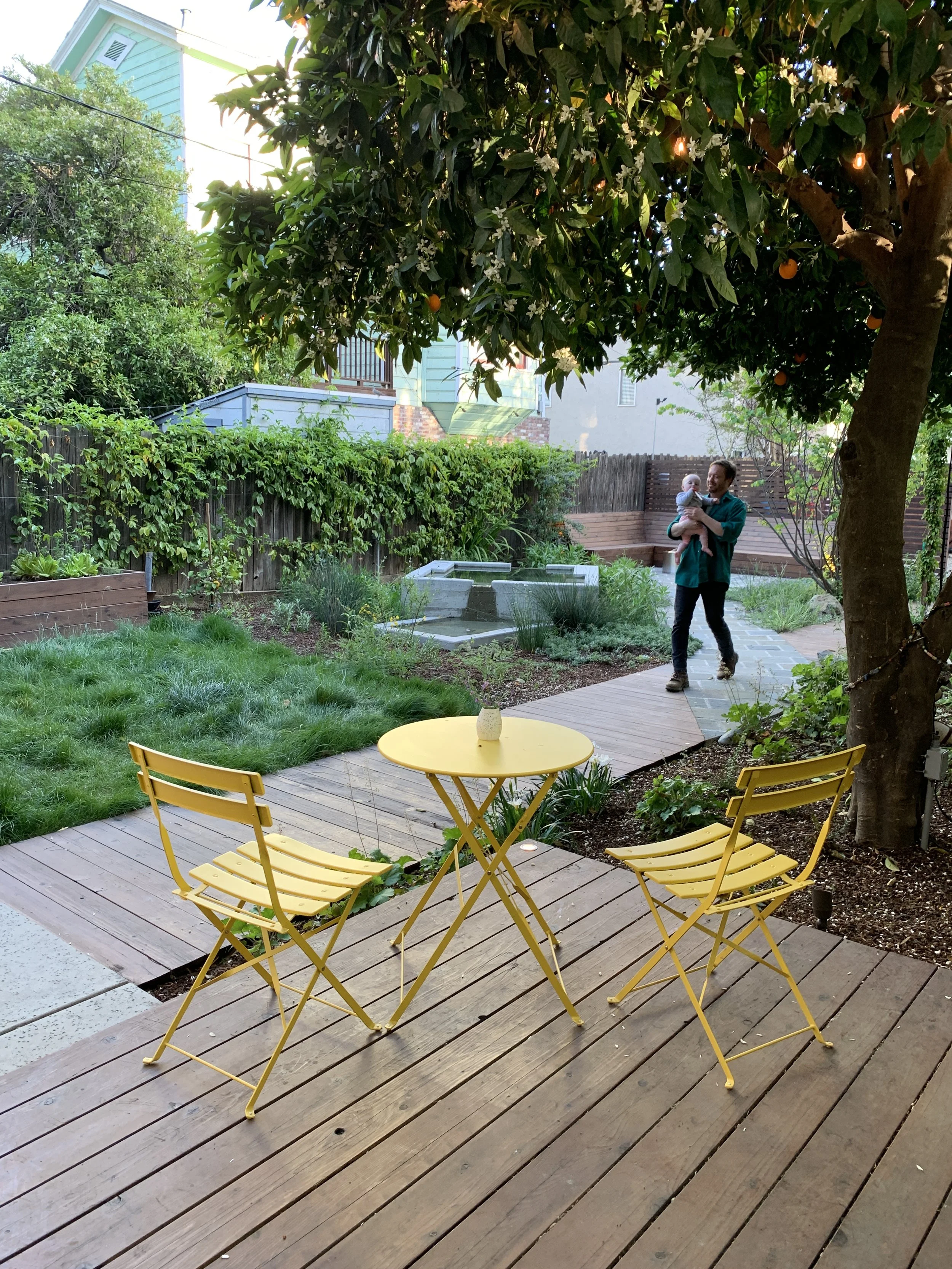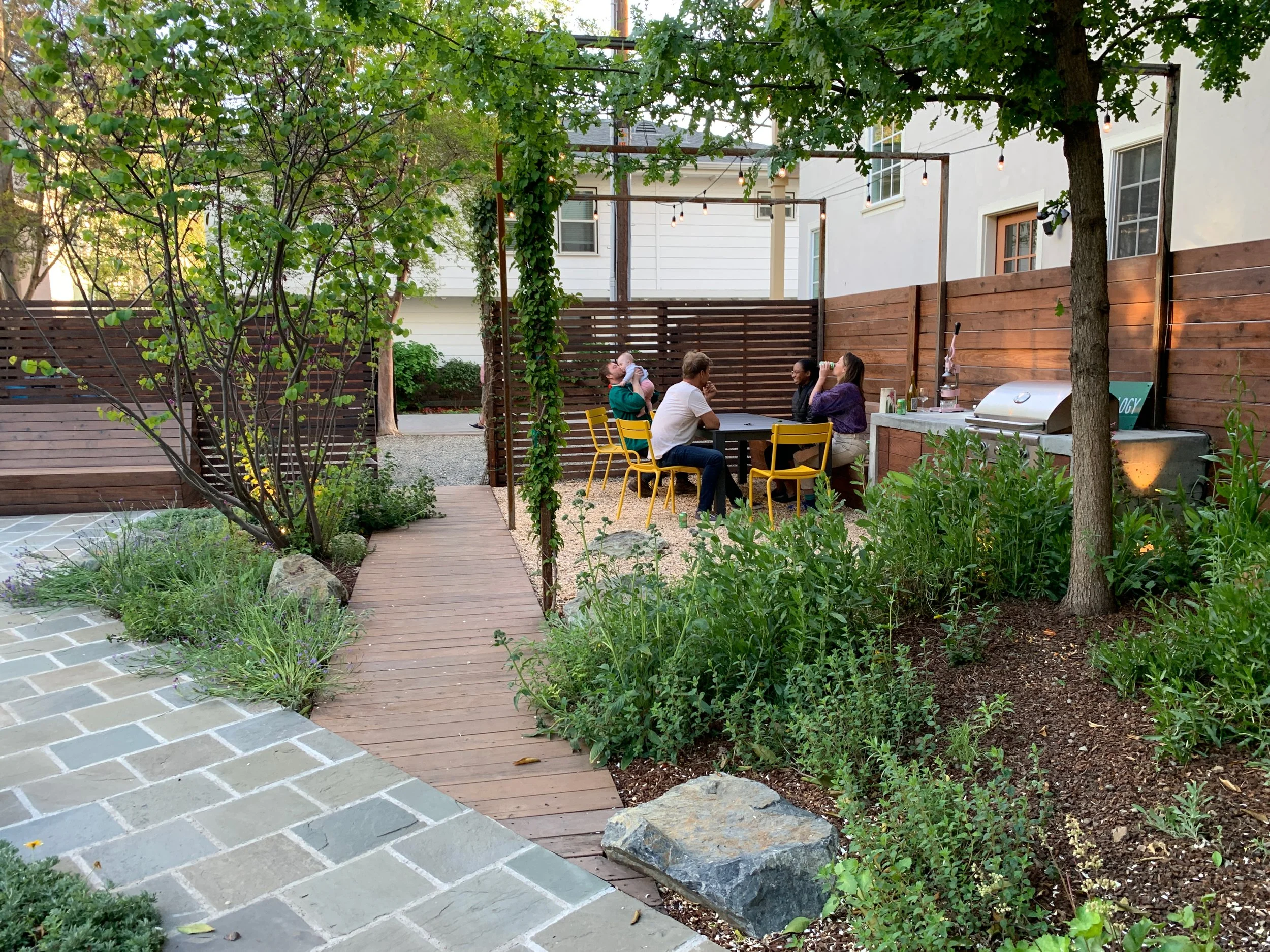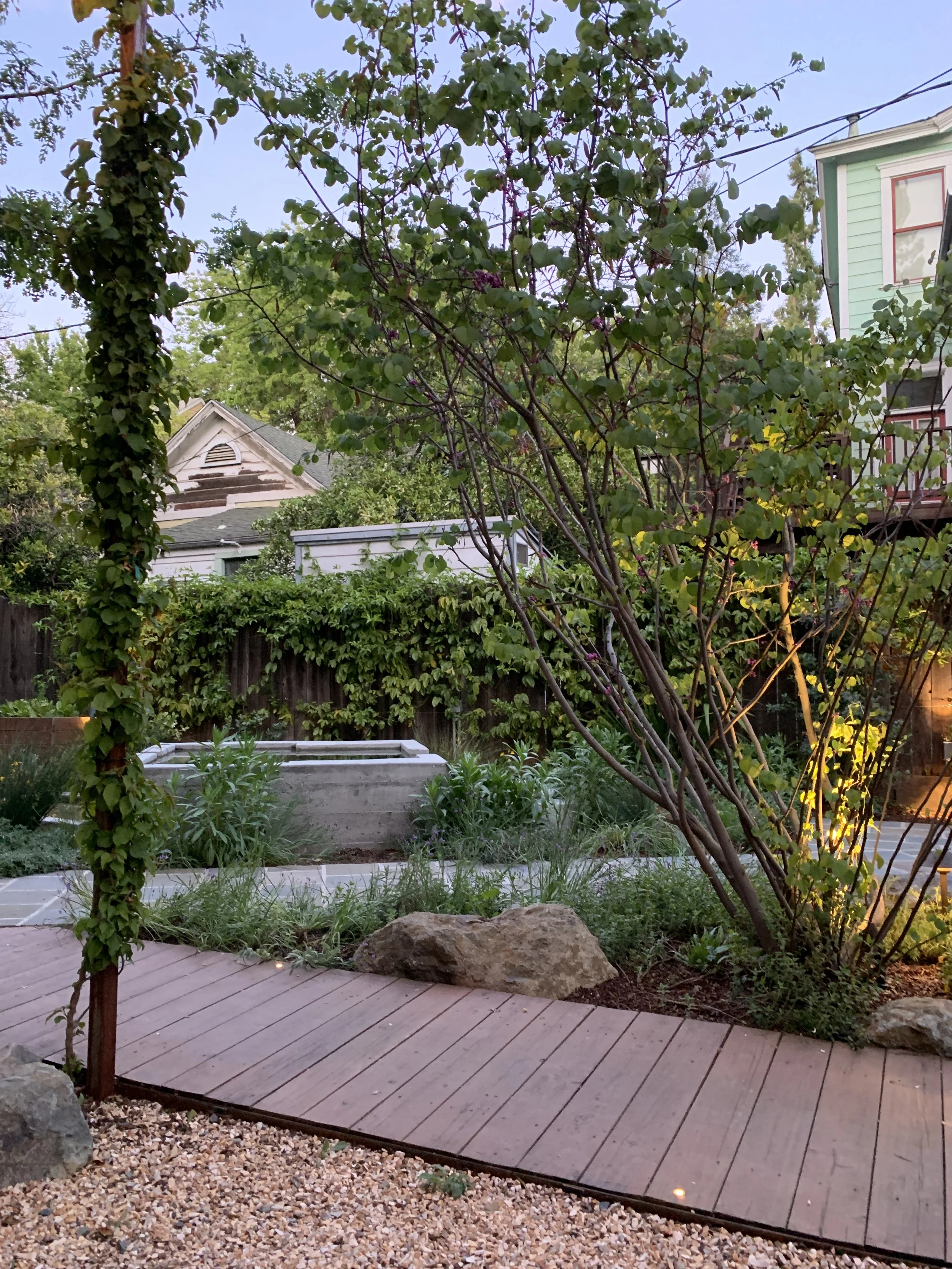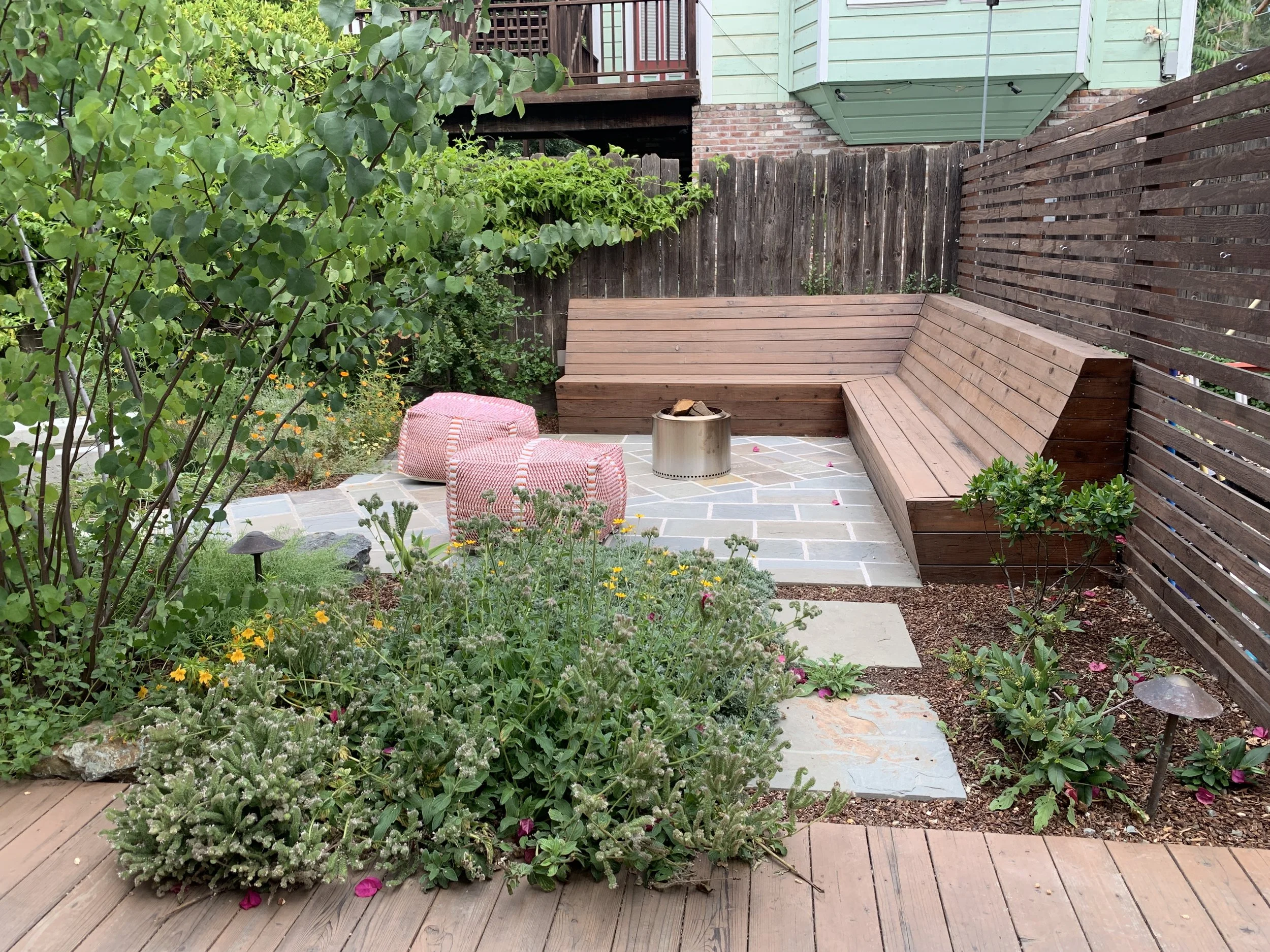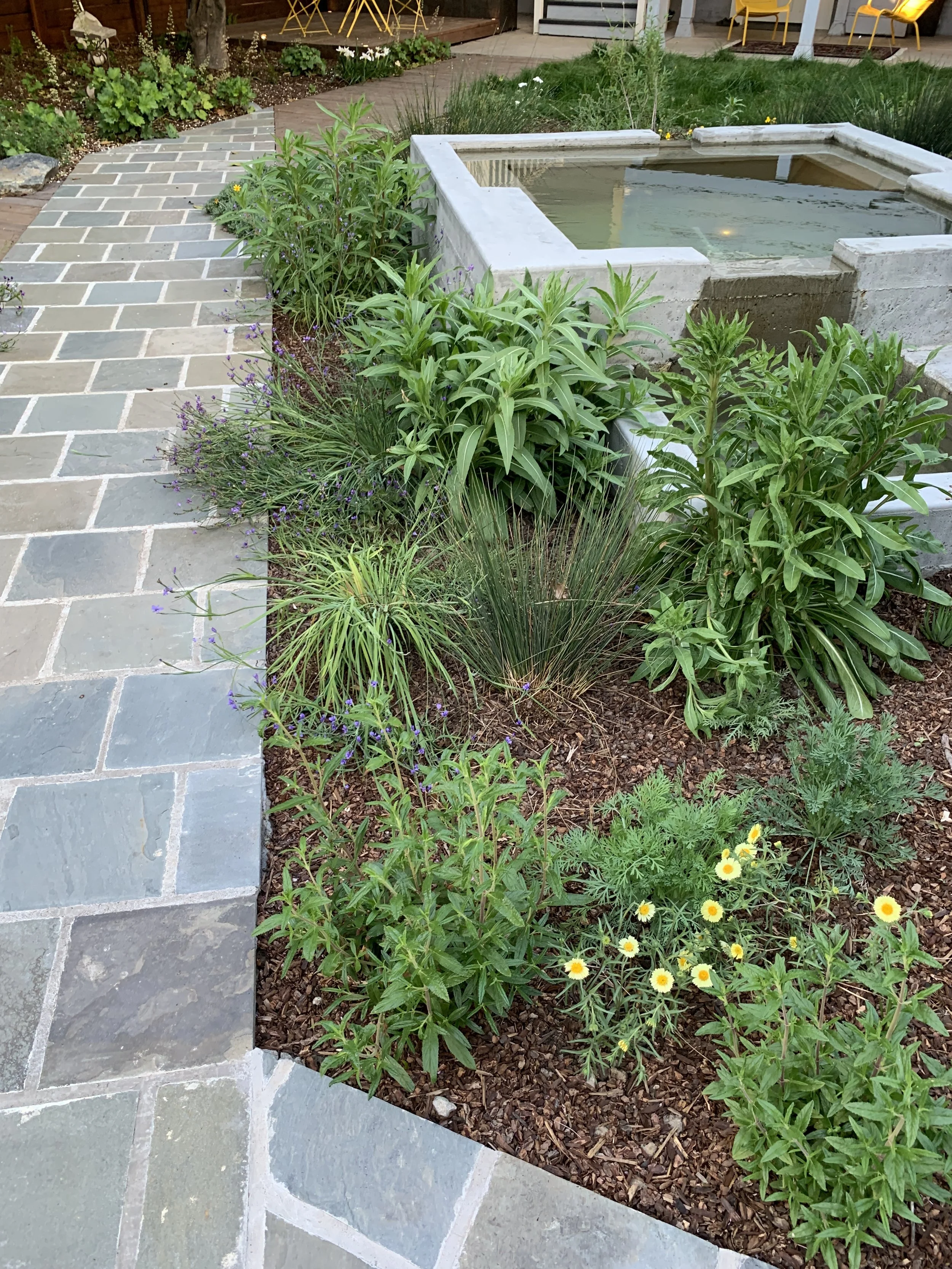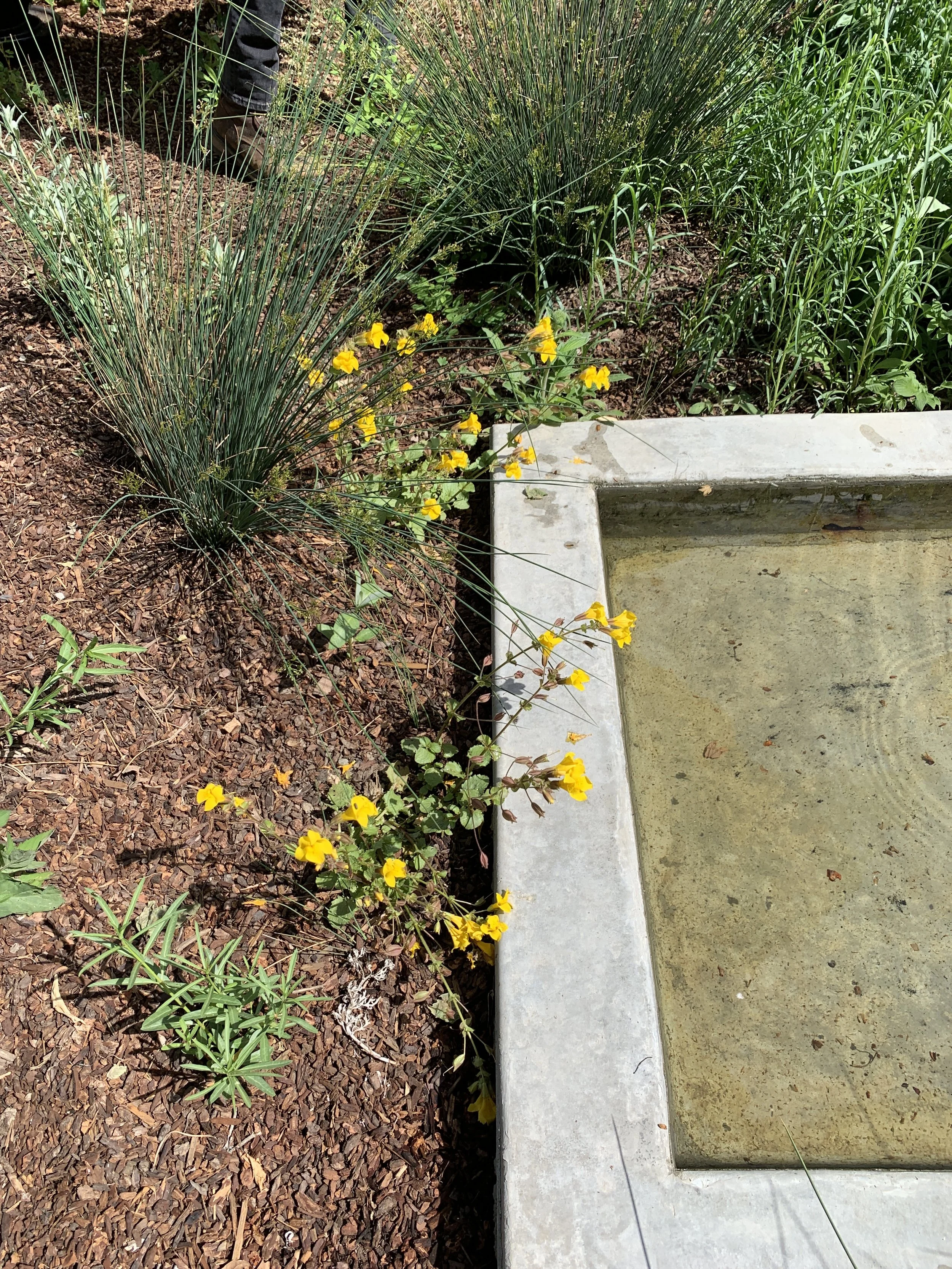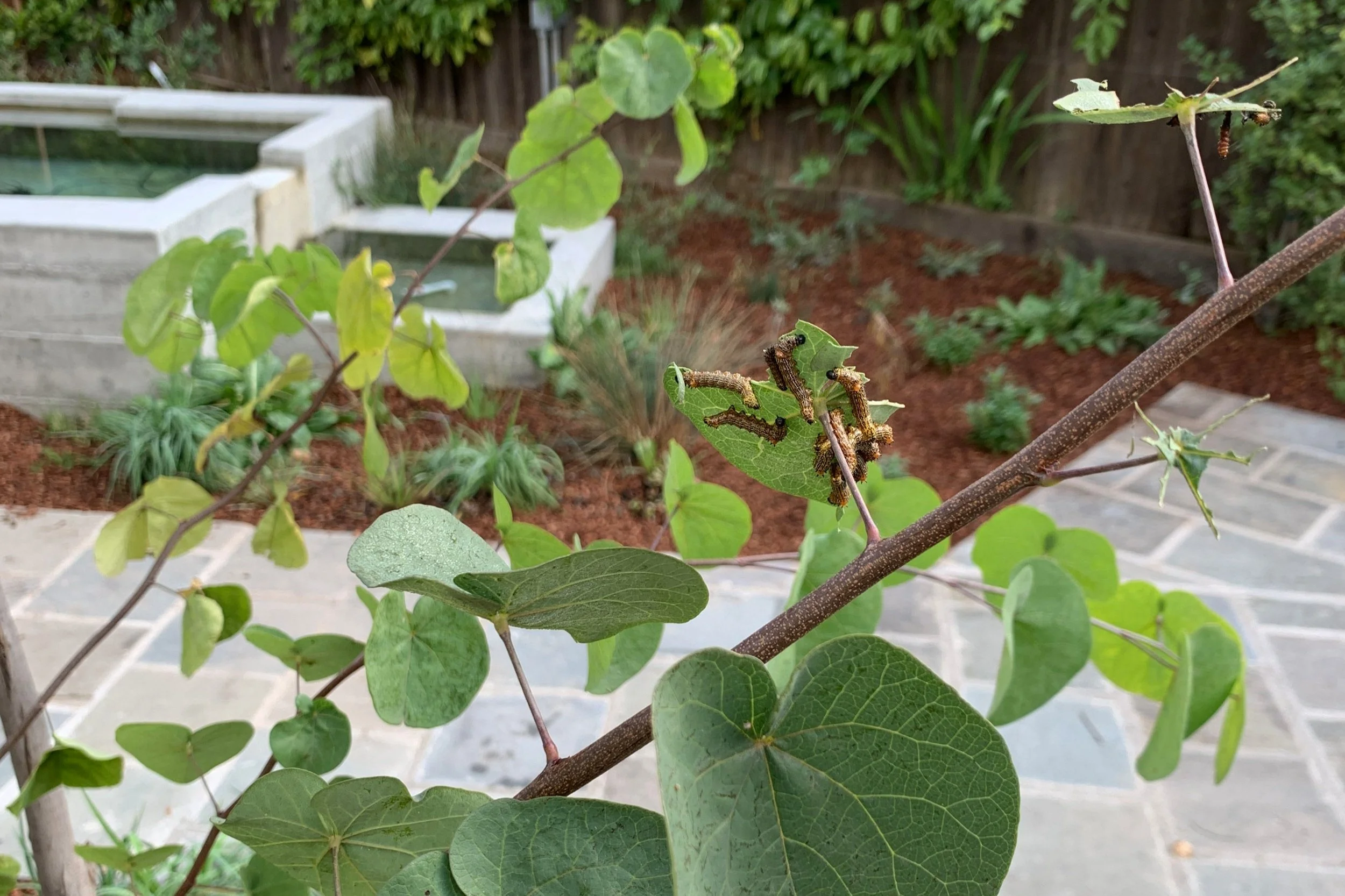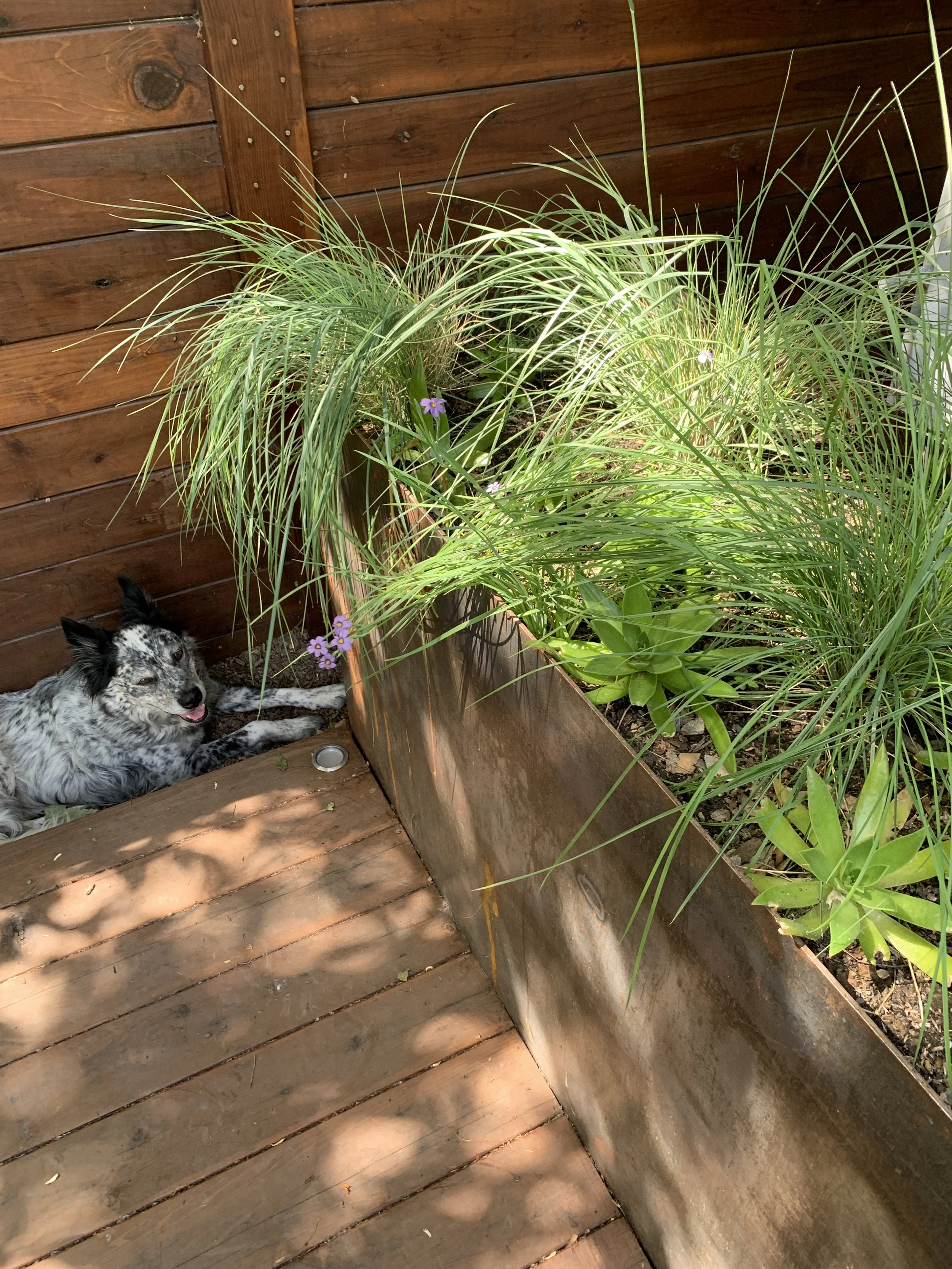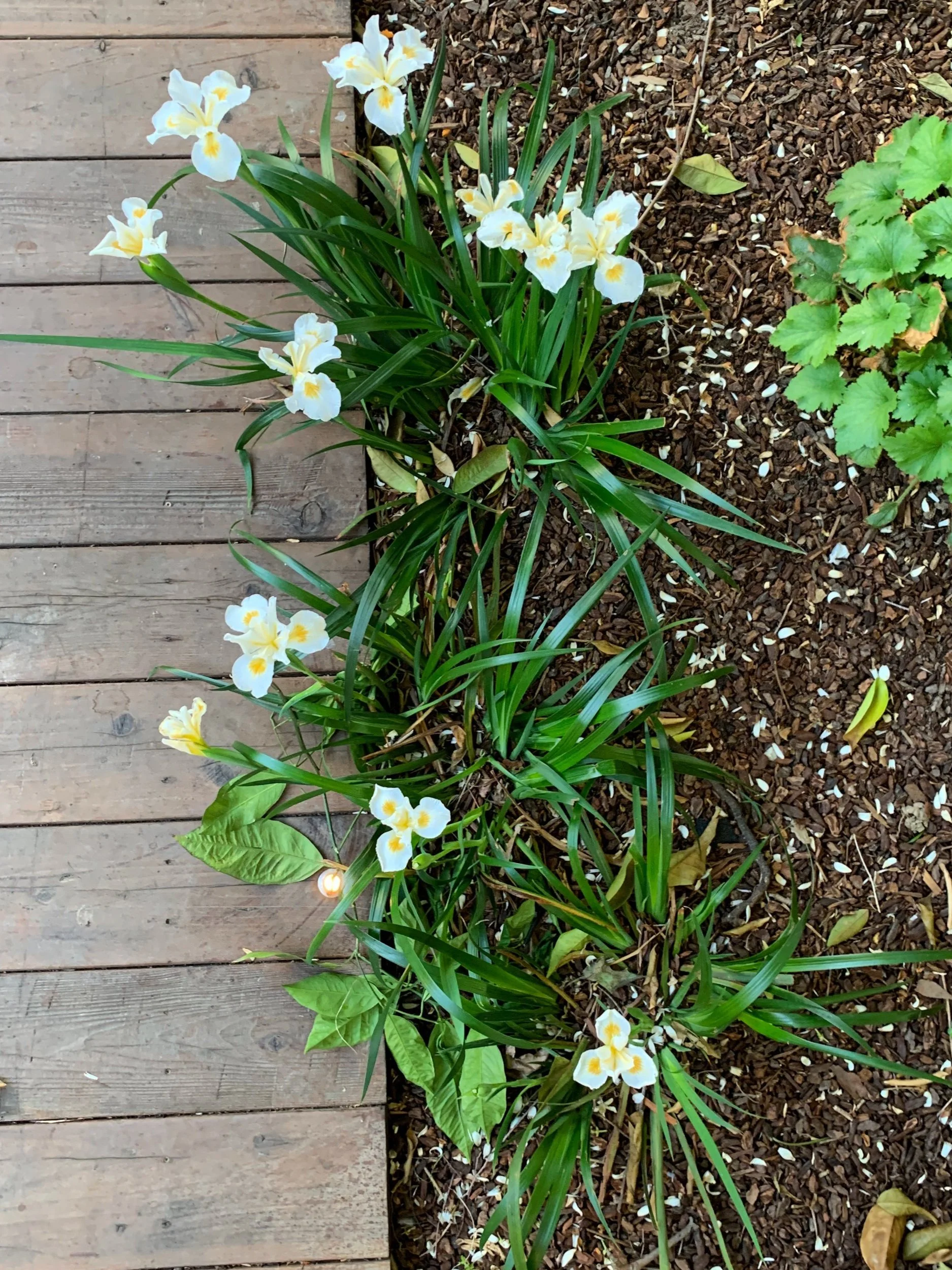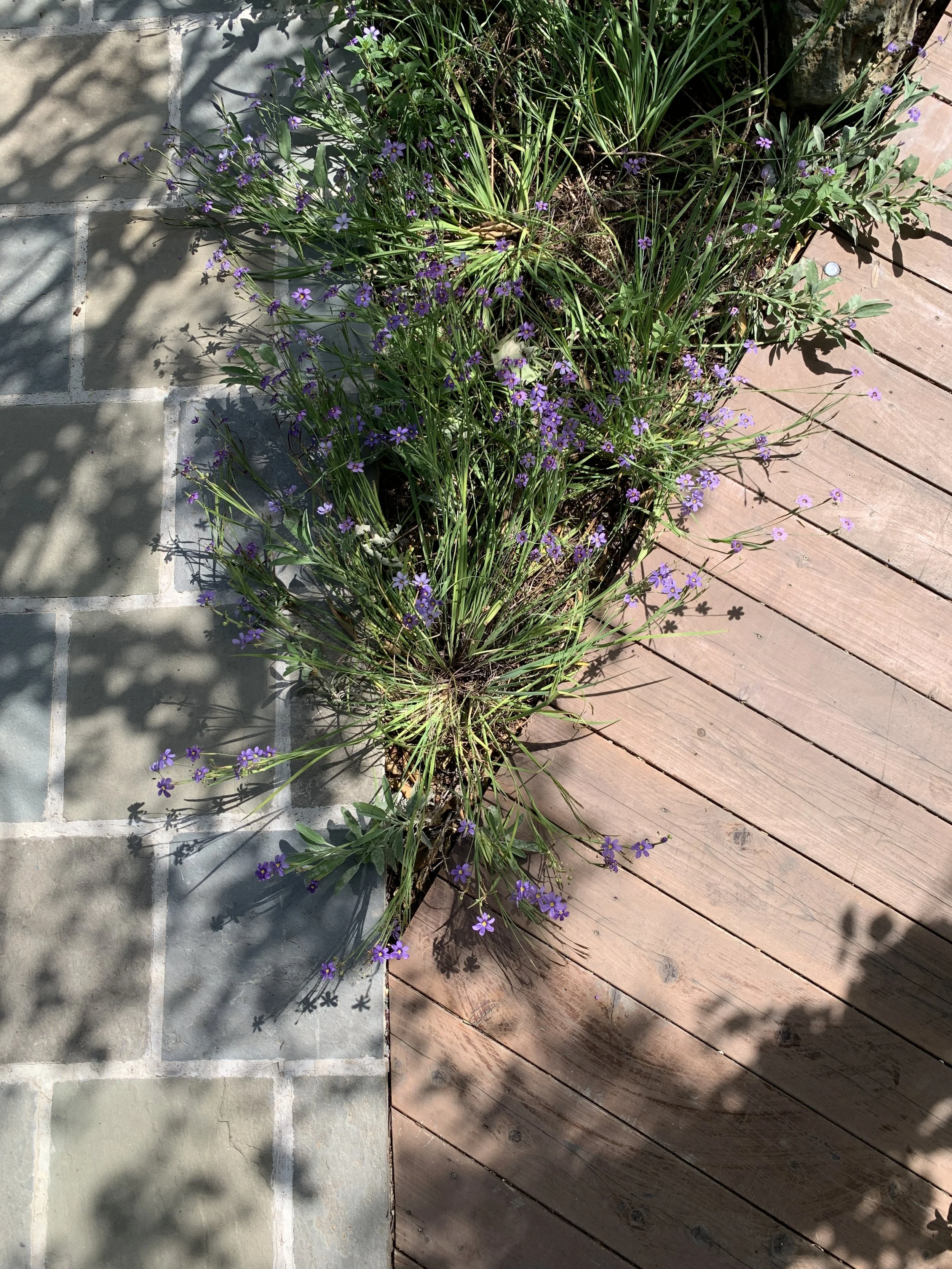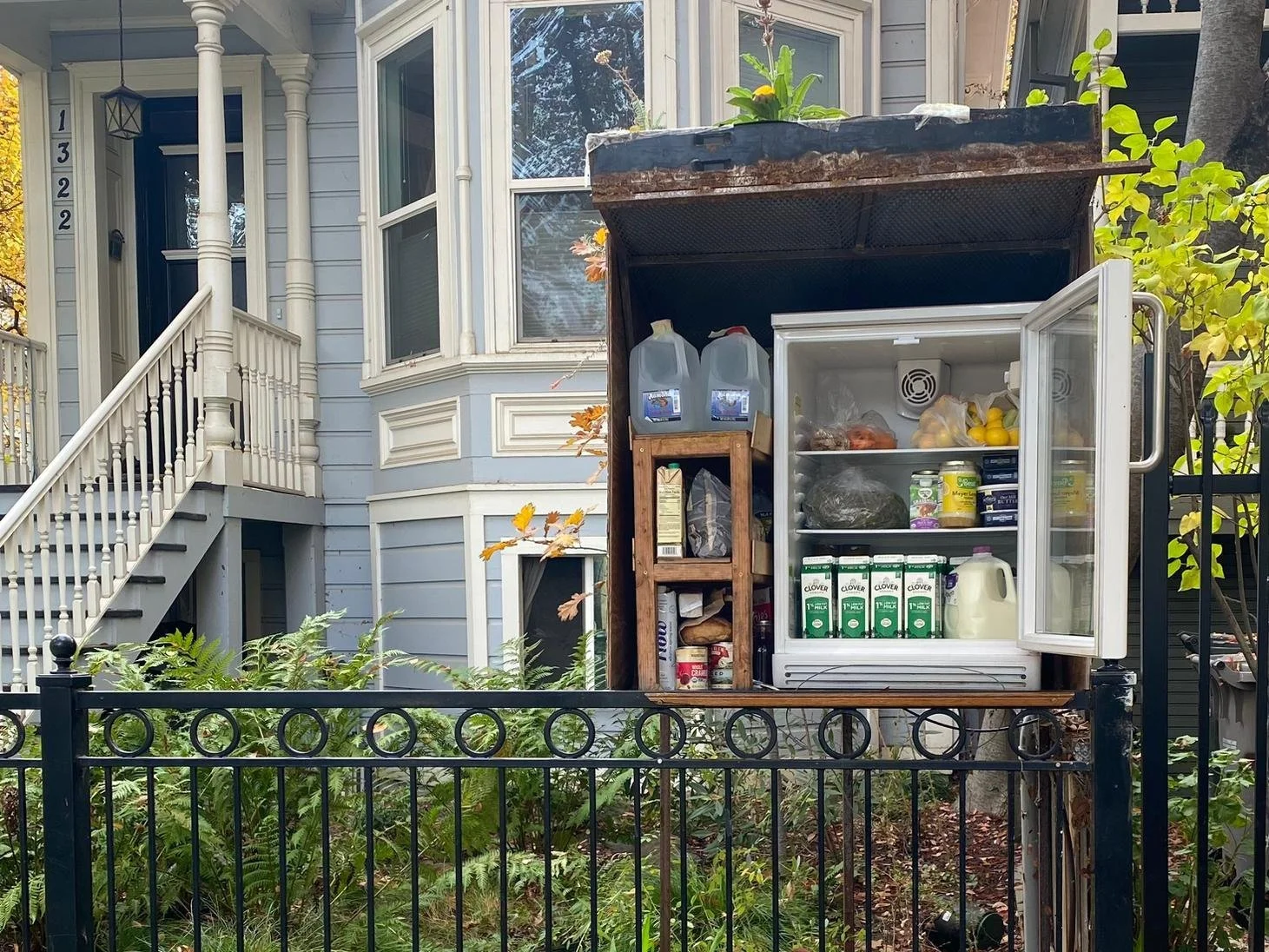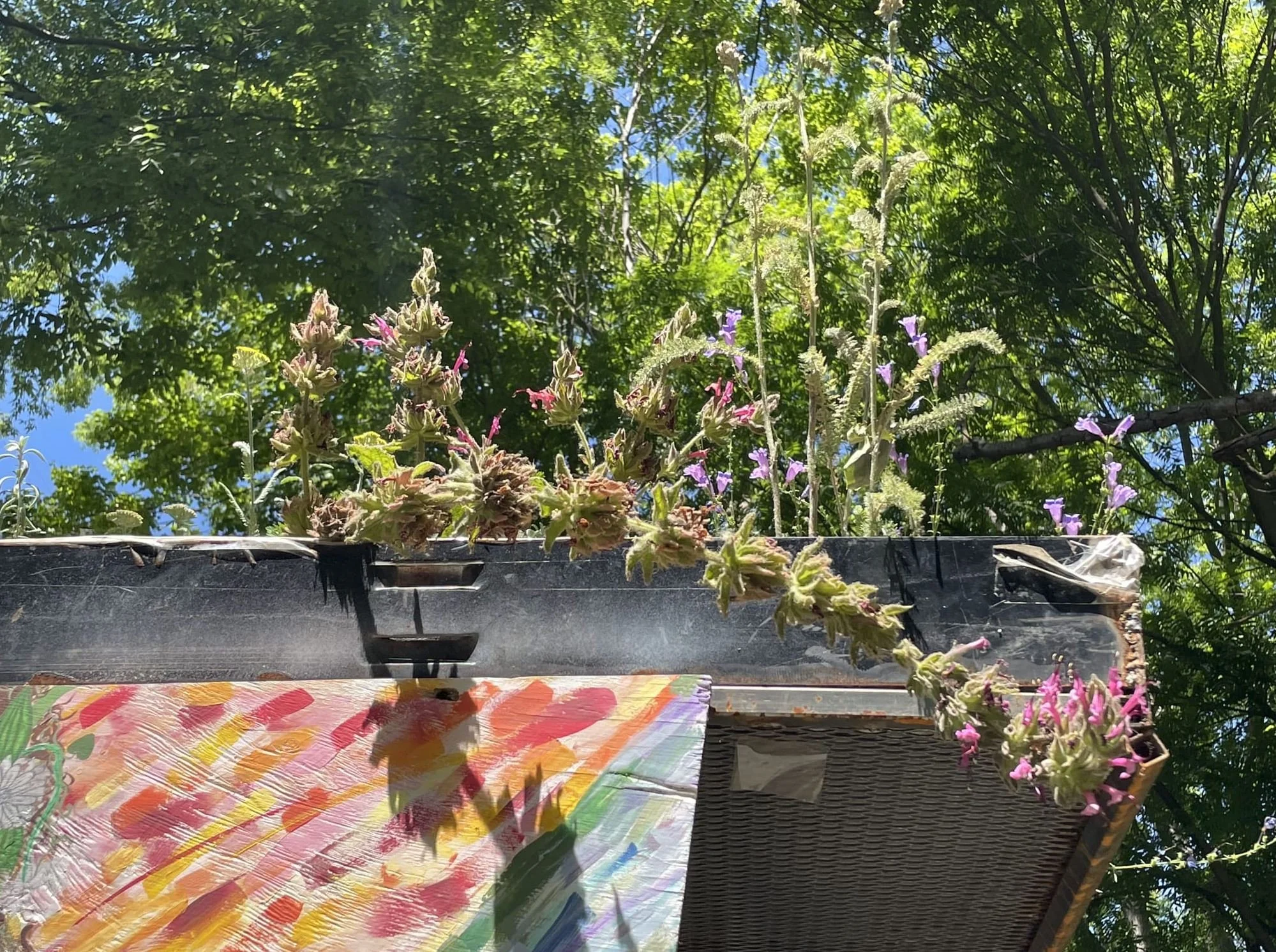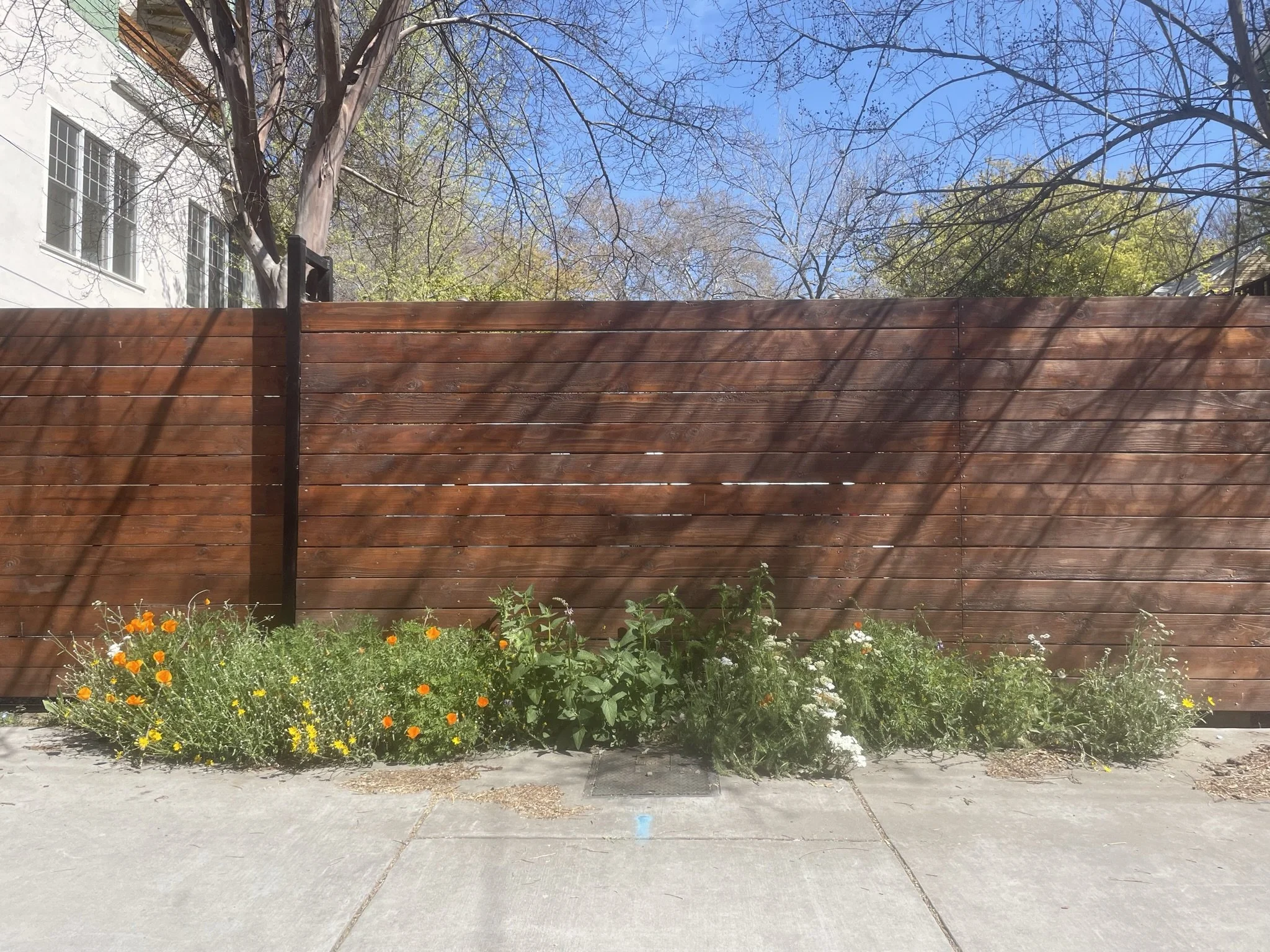A MIRID’S MANSION
FRONT AND BACKYARD
SACRAMENTO, CA | 2021
The goal for this garden was to create an urban oasis of resource-rich native habitat in the Mansion Flats neighborhood of Sacramento’s Downtown Grid, which is dominated by thirsty, non-native ornamentals. Our entomologist client wanted to include plants that would support fascinating and productive native plant-insect interactions. The design began with a centrally-located Western Redbud and a young Valley Oak, both of which became anchors for the new site layout and plant palette.
As a keystone species, the oak provides food for moths and butterflies, acorns for birds and mammals, and shade and shelter for both humans and wildlife. Similarly, the redbud plays host to redhumped caterpillars (Schizura concinna) that feed on the leaves, along with leaf-cutter bees (Megachile spp.) that remove segments to create their nests. Surrounding these anchor trees, long-blooming phacelia species attract a variety of native solitary bee species and patches of tarweed (Madia elegans) facilitate complex ecological interactions. Tarweed’s sticky hairs trap smaller insects like midges and fungus gnats, which in turn attract mirids (known as the “plant bugs”) and other beneficial insects that have adapted to walk on sticky plants. This narrative inspired the name of this project—"A Mirid’s Mansion.” Rather than seeing insect activity like defoliation as detractions, the garden welcomes and creates space for other species to shape the plants just as much as its human caretakers.
Since it was installed in 2021, the garden has become a comfortable, welcoming space that plays an integral part in everyday life. It has also served as an “ambassador” for what living with native plants can look like. Whether it’s hosting a toddler playdate, serving as a “stop” on a virtual garden tour, or inspiring a neighbor to incorporate more native plants into their landscape, it becomes a place for people, plants, and wildlife to become better neighbors.
HIGHLIGHTED PLANTS
Cercis occidentalis (Western Redbud)
Eriophyllum lanatum (Common Woolly Sunflower)
Erythranthe guttatus (Seep Monkey Flower)
Iris douglasiana ‘Canyon Snow’ (Canyon Snow Iris)
Juncus patens (Common Rush)
Monardella villosa (Coyote Mint)
Quercus lobata (Valley Oak)
Sisyrinchium bellum (Blue-Eyed Grass)
Native Mow Free Sod from Delta Bluegrass
Images by Miridae

